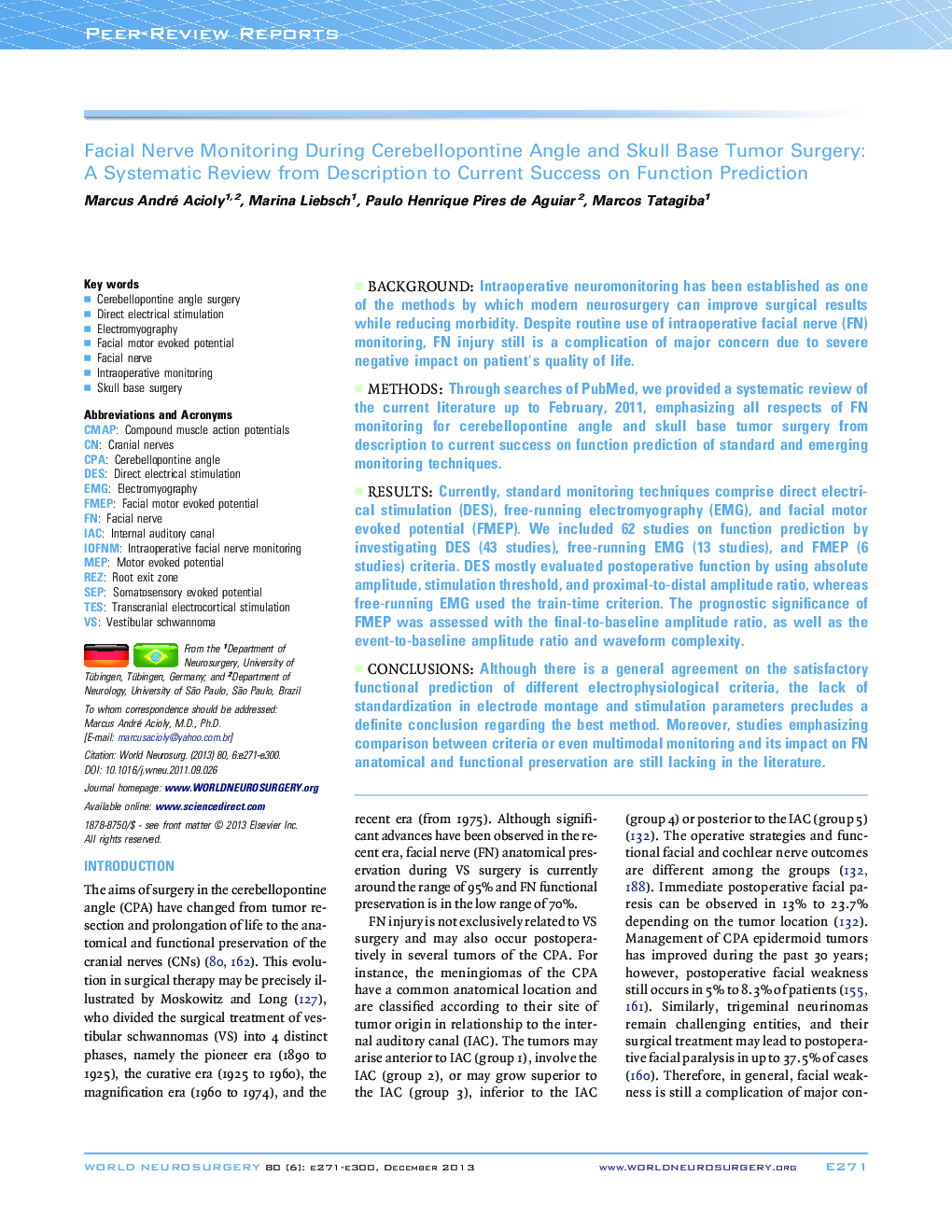| Article ID | Journal | Published Year | Pages | File Type |
|---|---|---|---|---|
| 3095847 | World Neurosurgery | 2013 | 30 Pages |
BackgroundIntraoperative neuromonitoring has been established as one of the methods by which modern neurosurgery can improve surgical results while reducing morbidity. Despite routine use of intraoperative facial nerve (FN) monitoring, FN injury still is a complication of major concern due to severe negative impact on patient′s quality of life.MethodsThrough searches of PubMed, we provided a systematic review of the current literature up to February, 2011, emphasizing all respects of FN monitoring for cerebellopontine angle and skull base tumor surgery from description to current success on function prediction of standard and emerging monitoring techniques.ResultsCurrently, standard monitoring techniques comprise direct electrical stimulation (DES), free-running electromyography (EMG), and facial motor evoked potential (FMEP). We included 62 studies on function prediction by investigating DES (43 studies), free-running EMG (13 studies), and FMEP (6 studies) criteria. DES mostly evaluated postoperative function by using absolute amplitude, stimulation threshold, and proximal-to-distal amplitude ratio, whereas free-running EMG used the train-time criterion. The prognostic significance of FMEP was assessed with the final-to-baseline amplitude ratio, as well as the event-to-baseline amplitude ratio and waveform complexity.ConclusionsAlthough there is a general agreement on the satisfactory functional prediction of different electrophysiological criteria, the lack of standardization in electrode montage and stimulation parameters precludes a definite conclusion regarding the best method. Moreover, studies emphasizing comparison between criteria or even multimodal monitoring and its impact on FN anatomical and functional preservation are still lacking in the literature.
